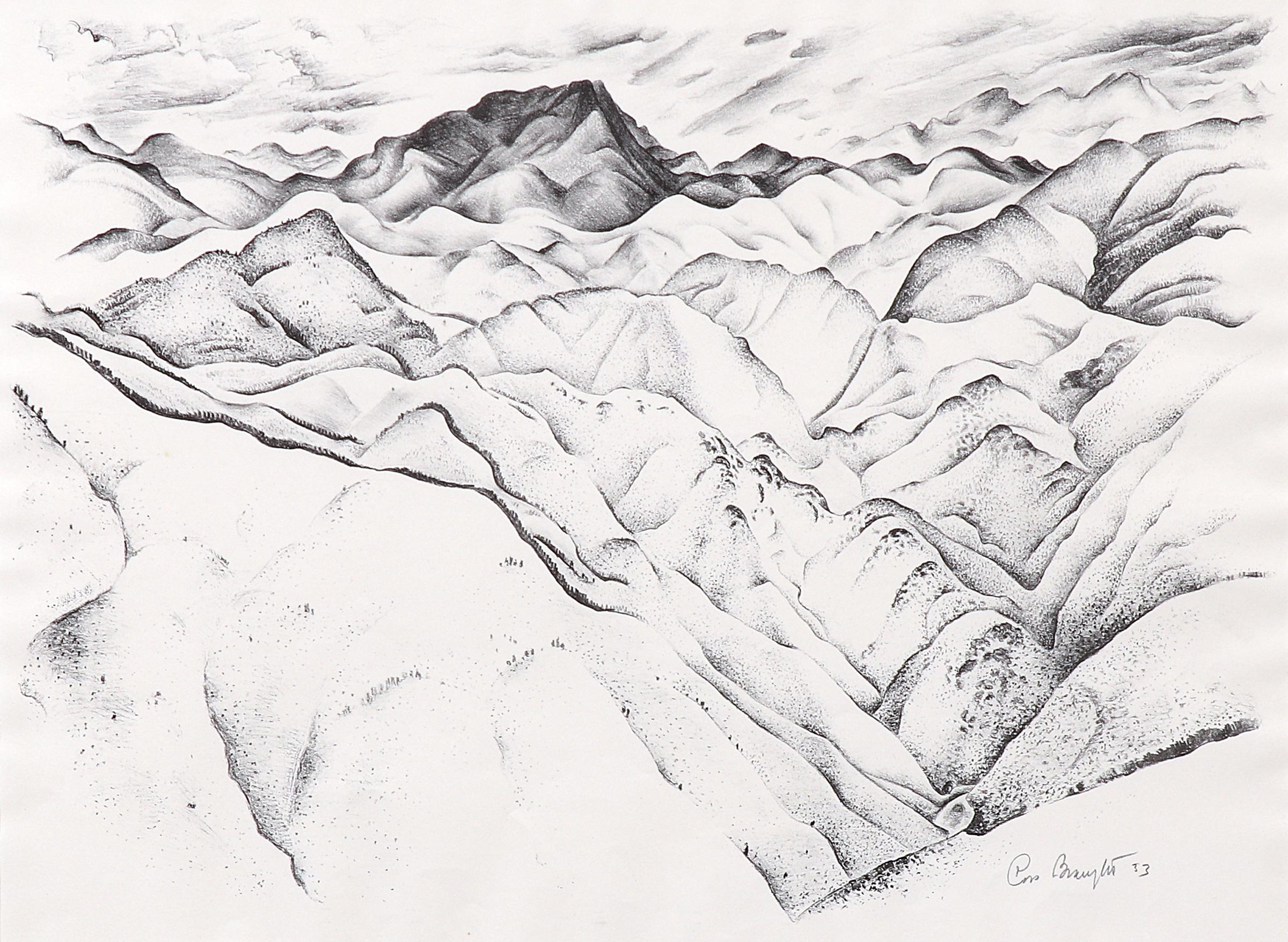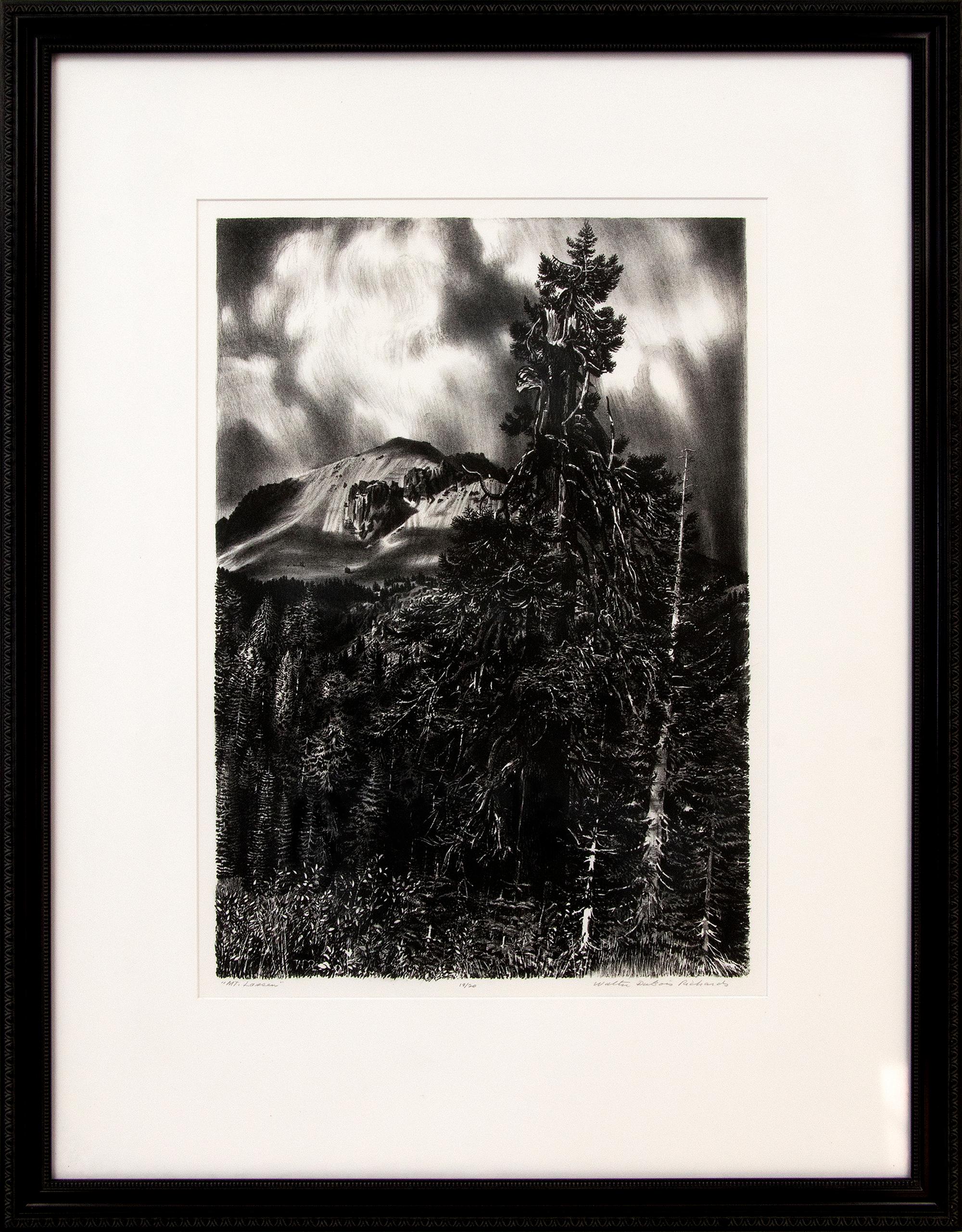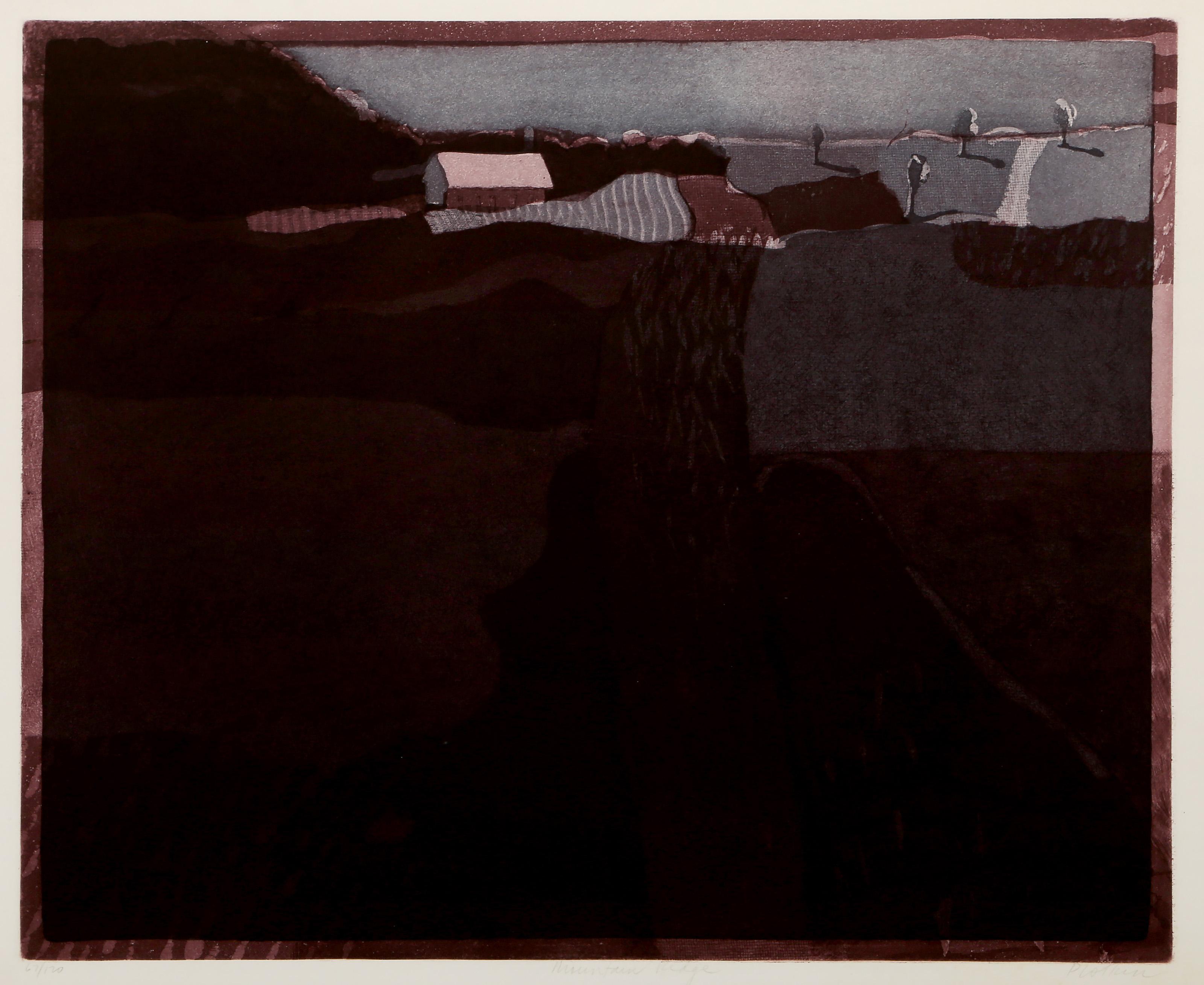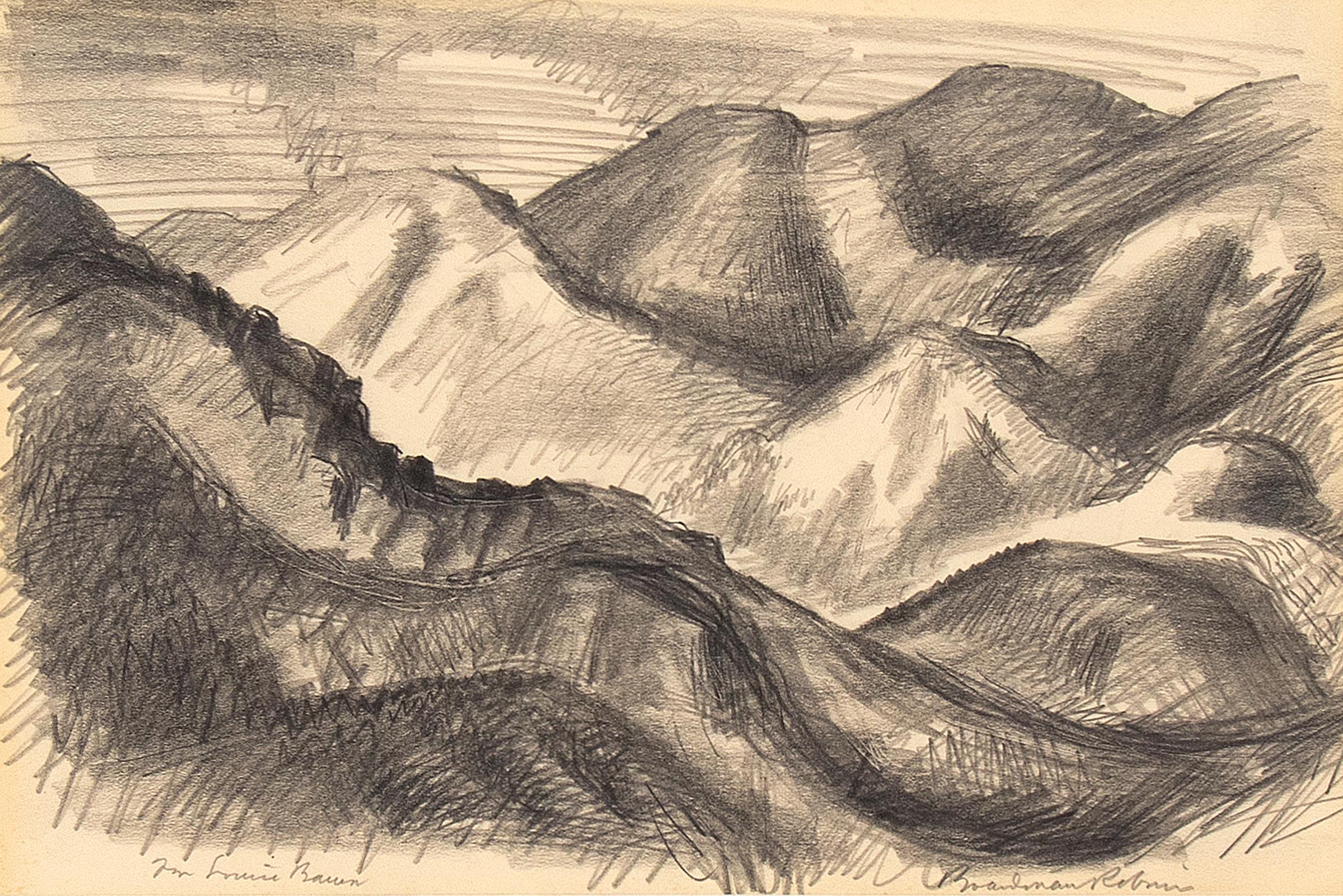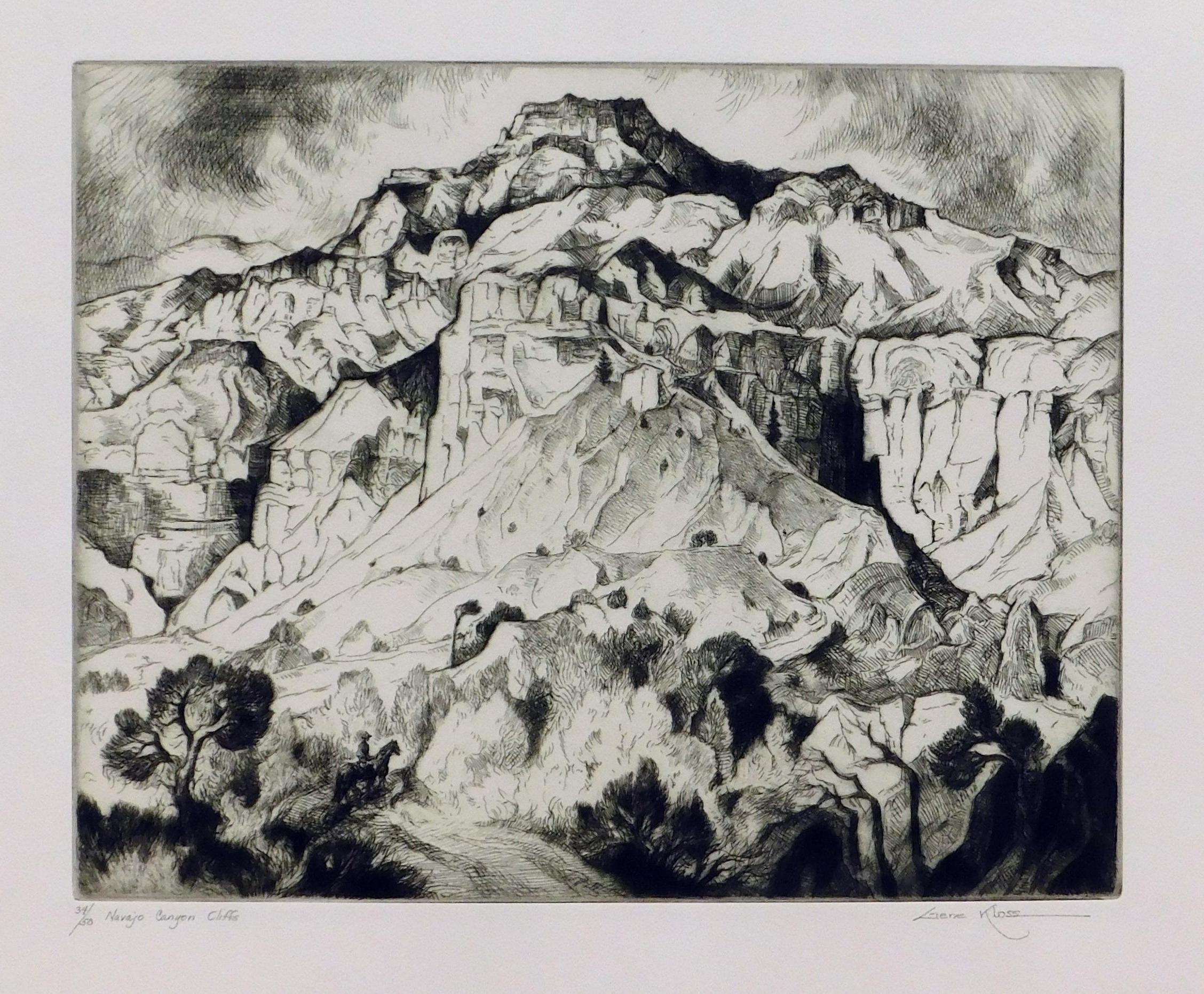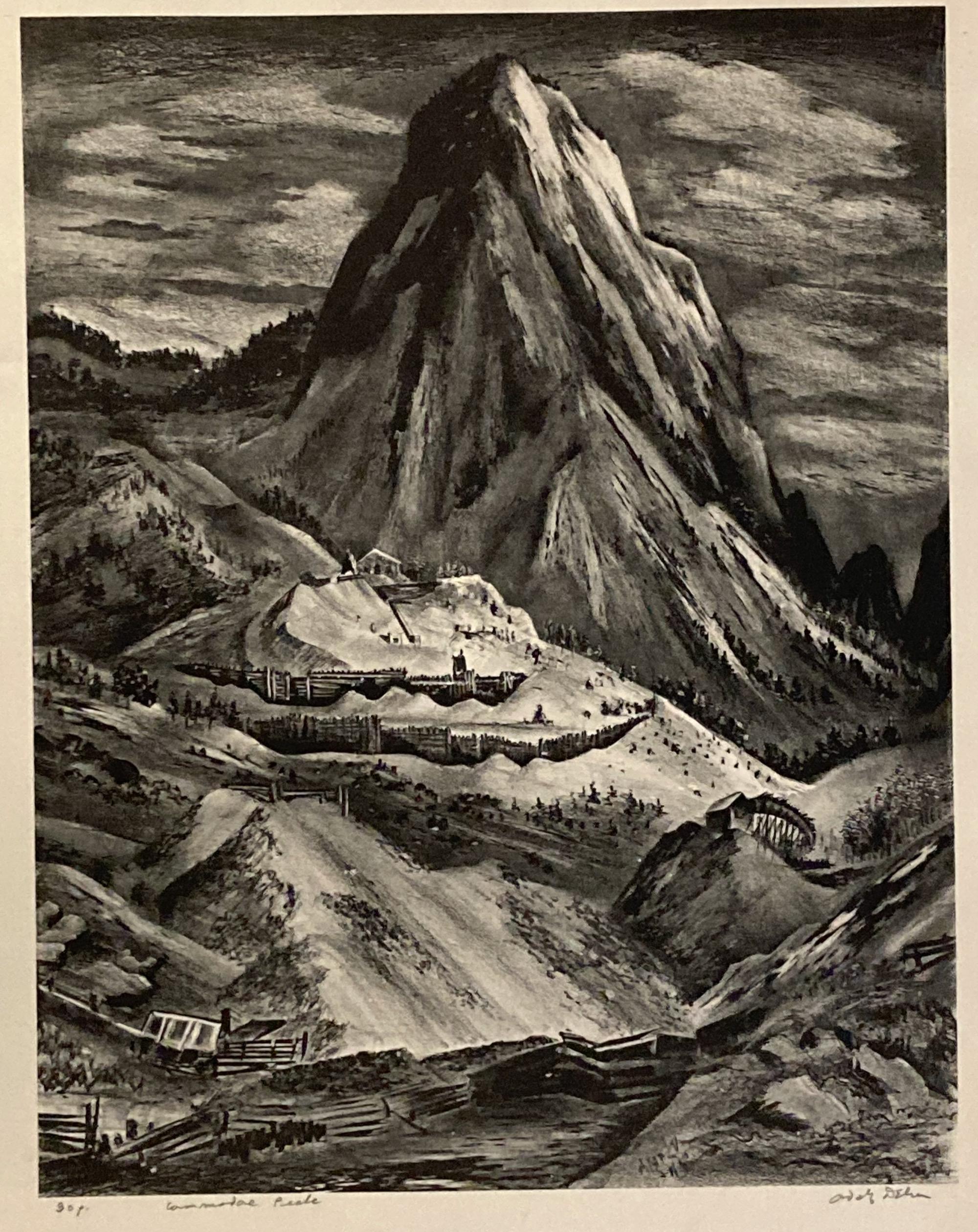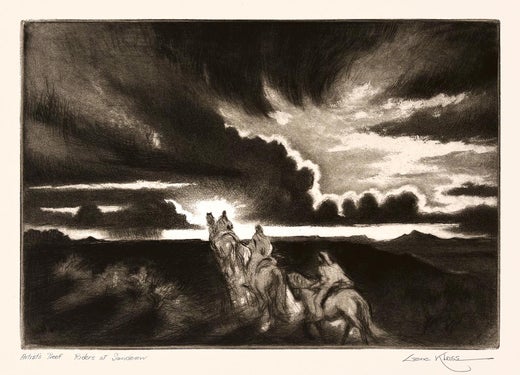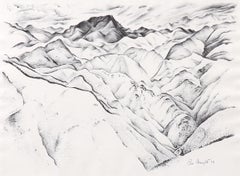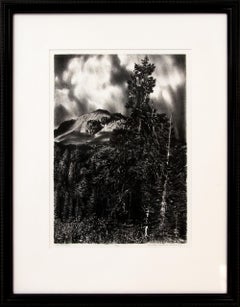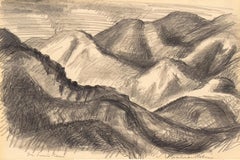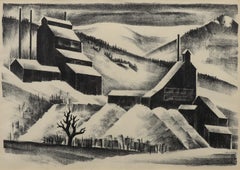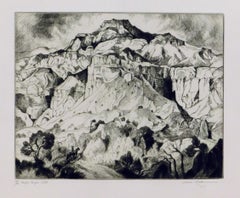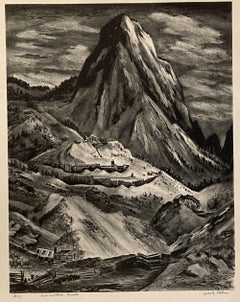Items Similar to Red Mountain Relic (View of Red Mountain, Colorado), Signed Black & White Print
Want more images or videos?
Request additional images or videos from the seller
1 of 13
Gene KlossRed Mountain Relic (View of Red Mountain, Colorado), Signed Black & White Print
$1,250
£952.70
€1,089
CA$1,758.67
A$1,926.57
CHF 1,014.07
MX$22,994.12
NOK 12,926.84
SEK 11,817.08
DKK 8,134.63
About the Item
A stunning example of American printmaking, “Red Mountain Relic” is an original etching with drypoint by acclaimed artist Gene Kloss (1903–1996). This atmospheric composition captures the rugged beauty of Red Mountain, located between Ouray and Silverton, near Telluride, Colorado—a region known for its dramatic alpine scenery and mining history.
Expertly executed in Kloss’s signature style, the print reveals her masterful use of light, shadow, and texture to convey both natural grandeur and emotional depth.
This piece is:
Signed in pencil by the artist in the lower right
Titled and numbered “27/50” in the lower left (limited edition of 50)
Professionally framed in a custom presentation with UV70 protectant glass to preserve its integrity and visual clarity
Provenance & Reference: Catalogued as No. 603 in "Gene Kloss: An American Printmaker, A Raisonné" by Eugene Sanchez (2009).
This rare and highly collectible work is a must-have for enthusiasts of Western American art, fine printmaking, and early 20th-century etchings.
- Creator:Gene Kloss (1903-1996, American)
- Dimensions:Height: 25.25 in (64.14 cm)Width: 18.5 in (46.99 cm)Depth: 0.5 in (1.27 cm)
- Medium:
- Movement & Style:
- Period:
- Framing:Frame IncludedFraming Options Available
- Condition:
- Gallery Location:Denver, CO
- Reference Number:Seller: 281441stDibs: LU27315971882
Gene Kloss
Gene (Alice Geneva) Kloss is considered one of America’s master printmakers. She was born in Oakland, California and established herself as an artist on the West coast. Kloss was introduced to etching by Perham Nahl while at UC Berkley. She graduated in 1924, and in 1925 married poet Phillips Kloss. In her late twenties, Kloss moved to Taos, New Mexico and began her life’s work of the New Mexican landscape and peoples. It was at this time that she received national acclaim. Her artwork exudes an unmistakable content and style. Enchanted by the architecture, mountainous landscapes and rituals of the inhabitants, Kloss captured the beauty of the Southwest and surrounding areas. Her style was bold yet deftly simple, masterfully expressing the elusive Southwestern light. In 1938, she exhibited in Paris with Ernest Blumenschein, Georgia O’Keeffe, and John Sloan. She was also a member of the National Academy of Design, New York.
About the Seller
5.0
Vetted Professional Seller
Every seller passes strict standards for authenticity and reliability
Established in 1979
1stDibs seller since 2013
299 sales on 1stDibs
Typical response time: 1 hour
- ShippingRetrieving quote...Shipping from: Denver, CO
- Return Policy
More From This Seller
View All1933 American Art Lithograph, Clear Creek Canyon by Ross Braught, Colorado
By Ross Eugene Braught
Located in Denver, CO
This striking original lithograph, Clear Creek Canyon I (Colorado), was created in 1933 by acclaimed American artist Ross Eugene Braught (1898–1983). A master of landscape and form, ...
Category
1930s American Modern Landscape Prints
Materials
Lithograph
Signed Mt. Lassen Vintage Lithograph by Richard Walter Dubois, Limited Edition
By Walter DuBois Richards
Located in Denver, CO
This striking vintage black-and-white lithograph by acclaimed artist Richard Walter Dubois vividly captures the dramatic landscape of Northern California’s Mt. Lassen. Featuring snow...
Category
Mid-20th Century American Realist Landscape Prints
Materials
Lithograph
Boardman Robinson “Colorado Mountain Landscape” Modernist Graphite Drawing
By Boardman Robinson
Located in Denver, CO
This original graphite on paper drawing by acclaimed artist Boardman Robinson (1876–1952) beautifully captures the dramatic majesty of the Colorado mountains. With expressive linewor...
Category
20th Century American Modern Landscape Drawings and Watercolors
Materials
Graphite
1933 Arnold Rönnebeck Lithograph Colorado Mountain Mine Winter Scene, Framed
By Arnold Rönnebeck
Located in Denver, CO
This rare 1933 lithograph by renowned modernist artist Arnold Rönnebeck depicts a striking winter scene of a Colorado mountain mine blanketed in snow. Rendered in dramatic black-and-...
Category
1930s American Modern Landscape Prints
Materials
Lithograph
Charles Ragland Bunnell 1938 Ink Drawing of Church in Rocky Mountains, Colorado
By Charles Ragland Bunnell
Located in Denver, CO
This vintage 1938 ink drawing by Charles Ragland Bunnell (1897–1968) beautifully depicts a church nestled amid the dramatic Rocky Mountains of Georgetown, Colorado. Executed in bold ...
Category
1930s American Modern Landscape Drawings and Watercolors
Materials
Ink
Arnold Ronnebeck Lithograph "Silver Mine, Russell Gulch" Colorado Scene
By Arnold Rönnebeck
Located in Denver, CO
"Silver Mine, Russell Gulch (12/25)" is a striking black-and-white lithograph by German-born American Modernist Arnold Ronnebeck (1885–1947). This rare print depicts a historic minin...
Category
1930s American Modern Figurative Prints
Materials
Lithograph
You May Also Like
Mountain Ridge, Modern Etching and Aquatint by Linda Plotkin
By Linda Plotkin
Located in Long Island City, NY
Linda Plotkin, American (1938 - ) - Mountain Ridge, Year: circa 1965, Medium: Etching and Aquatint on BFK Rives, signed, titled and numbered in pencil, Edition: 67/120, Image Size...
Category
1960s Modern Landscape Prints
Materials
Etching, Aquatint
Gene Kloss Original Pencil Signed Etching. Navajo Canyon Cliffs
By Gene Kloss
Located in Phoenix, AZ
Etching and drypoint on paper by famous Taos Artist Gene Kloss (1903-1996).
Title: Navajo Canyon Cliffs. Unframed and un-matted. Kloss #563
Pencil titled lower left. Pencil signed lo...
Category
Late 20th Century Landscape Prints
Materials
Drypoint
Adolf Dehn, Commodore Peak, 1940-42, mid-century lithograph of Colorado mountain
By Adolf Dehn
Located in New York, NY
Adolf Dehn (1895-1968) was an American painter, printmaker and draftsman. A native of Waterville, Minnesota, he attended the Minneapolis School of Art where he met colleague Wanda Ga...
Category
1940s American Modern Landscape Prints
Materials
Lithograph
Mountain Scene
By Ira Moskowitz
Located in New York, NY
Ira Moskowitz (1912-1985), [Mountain Scene], 1943, lithograph, signed in pencil lower right, numbered lower left (27/50) [also signed and dated 1943 in ...
Category
1940s American Realist Landscape Prints
Materials
Lithograph
Untitled - Rocky Mountains, Surrealist Aquatint Etching by Hans-Georg Rauch
By Hans-Georg Rauch
Located in Long Island City, NY
Hans-Georg Rauch, German (1939 - 1993) - Untitled - Rocky Mountains, Year: 1978, Medium: Etching with Aquatint, signed and numbered in pencil, Edition: 100, Size: 21 x 29 in. (5...
Category
1970s Surrealist Landscape Prints
Materials
Etching, Aquatint
Mont et Mervale (Mountains and Wonder)
By Christine Ravaux
Located in New Orleans, LA
Born in Charleroi, Belgium, Christine Ravaux is an artist who mirrors her surroundings in the mezzotints she creates. She has portrayed the black hills that dot the landscape of the ...
Category
1990s Contemporary Landscape Prints
Materials
Mezzotint, Aquatint
$281 Sale Price
37% Off
More Ways To Browse
Lawrence Heyman
Lawrence Josset
Leroy Neiman Serigraphs Sailing
Lilian May Miller
Lionel Lindsay
Maine Woodcut
Mammoth Ski Poster
Marco Sadeler
Mary Teichman
Monet Etching
Orchard By David Harrison
Oscar De Mejo
Pablo Picasso Original Inc Sketch
Paul Baum
Paul Emile Lecomte Etching
Paul Pedulla
Peter De Pannemaeker
Peter Max Boat
